Children and Adolescents
5.3.2.6. Special considerations: TB/HIV coinfection
The approach to designing MDR/RR-TB treatment regimens is largely the same for all children and adolescents, regardless of HIV status, although potential drug–drug interactions should be avoided through the careful selection of TB medicines in the regimen.19
5.2.12.3. Treatment failure
A person with treatment failure is defined as one whose treatment regimen needed to be terminated or permanently changed to a new regimen or treatment strategy. Reasons for such a change include no clinical or bacteriological response, adverse drug reactions, and evidence of resistance to medicines in the regimen (108).
The possibility of treatment failure should be considered in a child or adolescent who is receiving TB treatment and (72):
Executive summary
Introduction
Children and young adolescents (aged below 15 years) represent about 11% of all people with tuberculosis (TB) globally. This means that 1.1 million children become ill with TB every year, almost half of them below five years of age. National TB programmes (NTPs) only notify less than half of these children, meaning that there is a large case detection gap (1).
2. TB screening and contact investigation
This chapter includes current WHO recommendations that apply to children and adolescents on TB screening and contact investigation. They have been consolidated from current WHO guidelines on systematic screening for TB disease and contact investigation, namely the WHO consolidated guidelines on tuberculosis. Module 2: screening - systematic screening for tuberculosis disease (11) and Guidance for national tuberculosis programmes on the management of tuberculosis in children (second edition) (8).
5.4.5. Post-TB health-related quality of life
Health-related quality of life is the perceived quality of a person’s daily life. It is an holistic way to quantify and measure illness-associated morbidity and the impact of health interventions. Examples of generic, non-disease-specific tools that can be used in young children, including those with TB, are EQ-5D-Y and TANDI (153, 154). EQ-5D-Y is a widely used self-report measure for children aged 8 years and over (155).
5.4.4. Post-TB osteoarticular disease in children and adolescents
Although osteoarticular TB is uncommon (approximately 1–2% of all children with TB and 8% of children with EPTB), the potential long-term consequences of the disease, particularly in children, can be major (149).
Pagination
- Previous page
- Page 17
- Next page

 Feedback
Feedback